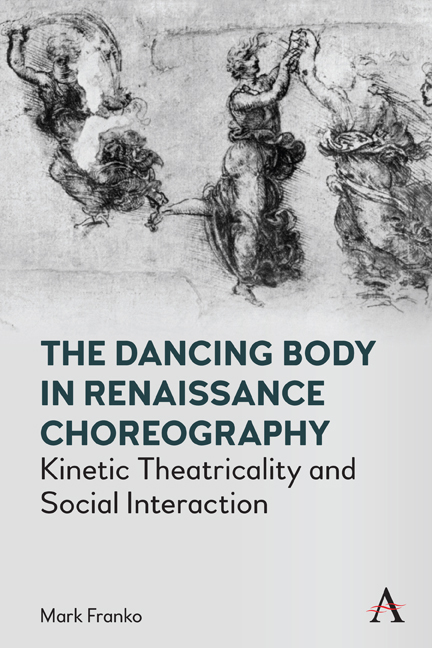Book contents
- Frontmatter
- Dedication
- Contents
- Preface to the Revised Edition
- Chapter 1 Introduction
- Chapter 2 The Mythological Intertext: Language
- Chapter 3 The Sociological Intertext: Courtesy
- Chapter 4 The Pedagogical Intertext: Precepts
- Chapter 5 The Political Intertext: Civil Conversatione (Social Intercourse)
- Bibliography
- Index
- Frontmatter
- Dedication
- Contents
- Preface to the Revised Edition
- Chapter 1 Introduction
- Chapter 2 The Mythological Intertext: Language
- Chapter 3 The Sociological Intertext: Courtesy
- Chapter 4 The Pedagogical Intertext: Precepts
- Chapter 5 The Political Intertext: Civil Conversatione (Social Intercourse)
- Bibliography
- Index
Summary
The courtly dance instruction books of Renaissance Italy, Burgundy and France have been dealt with in a variety of ways since they came to the attention of late nineteenth-century musicologists and theater historians. Still this wealth of material having been subjected to the scrutiny of two generations of reconstructors has yet to be examined as seminal for Western systems of kinetic theatricality. A systematization or implicit theory of kinetic theatricality is extremely difficult to unravel because the dancing body in what has become classical theatrical dancing is both to all appearances arbitrarily codified (thus dance is a master category leading one to the assumption that a theory as such is possible for the body alone) and on occasion mimetic (beholden to Aristotle's Poetics) though not necessarily both or either at the same time. By theatricality we do not refer to the theater per se but to a theory of the body in its intersubjective potential to address the beholder by drawing attention to itself.
It should be borne in mind that my corpus of texts does not deal with the ballet de cour, the masque or the mascarade. The ballet de cour was a composite spectacle of the sixteenth and seventeenth centuries in France whose libretto called for the use of pantomime, declamation, decor machines and costumes as well as dance. By contrast, the treatises we will study set forth the social dance, which could be performed impromptu, in camera or in public. According to Ingrid Brainard, the first two real ballets or miniature dance dramas, “La mercanzia” and “La sobria,” were written by Domenico da Piacenza between 1416 and 1425. Representational or imitative social dance, however, constitutes the exception rather than the rule in the Renaissance. Although he does note that the pavane could be used in mascarades, Thoinot Arbeau evokes the role of movement in theatrical representation only within a broad historical context when he makes reference to the Roman “saltations”: “aulcunefois on y adiouxte [à la danse] les masques pour monstrer les gestes d’un personnage que l’on veult representer” (at one time masks were worn to accentuate the gestures of the character represented). This remark serves to place social dance within a pantomimic lineage but also makes it clear that contemporary social dances did not as a rule contain characters to be depicted.
- Type
- Chapter
- Information
- The Dancing Body in Renaissance ChoreographyKinetic Theatricality and Social Interaction, pp. 1 - 18Publisher: Anthem PressPrint publication year: 2022



